
Plum Perfect: Choosing the Right Plum Trees Variety for Your Garden
Published: 22/04/2024 | Updated: 05/06/2024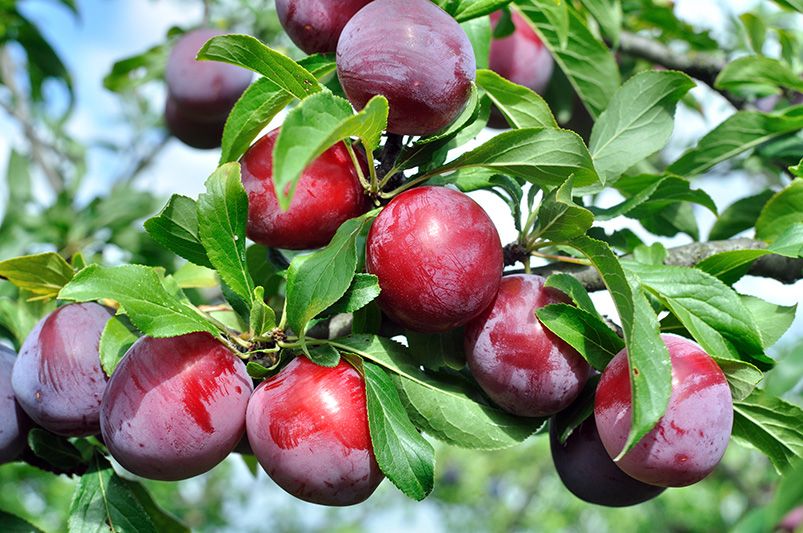
Plum trees reign supreme in many home gardens, offering a delightful combination of delicious fruit and aesthetic appeal. This article delves into the world of plums, exploring four of the most popular varieties you can choose from to enjoy homegrown plums and transform your garden with the beauty of their springtime blossoms and the vibrant hues of their fruit.


Remember, the key to success is choosing the perfect variety for your climate and needs. By considering factors like chill hours (a winter temperature requirement) and desired fruit characteristics, you can ensure your plum tree thrives and becomes a cherished addition to your garden.
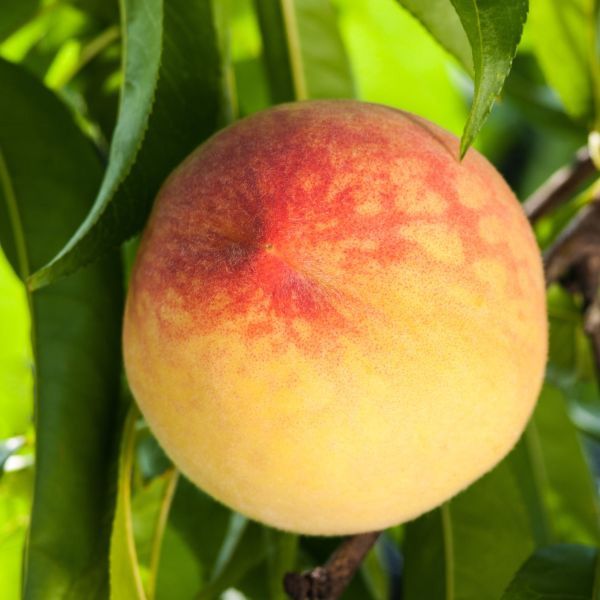
1. The Burbank Plum Tree
The Burbank Plum Tree is more than just a fruit-bearing marvel; it's a testament to the ingenuity of Luther Burbank, a pioneer in American horticulture. Thriving in USDA zones 5 through 9, this delightful tree not only adorns landscapes with its pleasing aesthetics but also rewards with a bountiful harvest of mouthwatering fruits.
Plantation & Growth
Favoring full sun and well-drained, loamy soil, the Burbank Plum Tree establishes its roots with grace. A moderate grower, it reaches heights of 15-20 feet, making it an ideal fit for medium-sized gardens. Spring unveils a spectacle of white blossoms, paving the way for summer's juicy rewards. When planting, ensure good spacing and consider adding organic compost to enrich the soil, setting a solid foundation for vigorous growth.
Plant Care
Routine care involves watering deeply, particularly during the first few years and in dry spells, to encourage deep root development. An annual application of balanced fertilizer supports healthy foliage and fruit production. Mulching helps retain soil moisture and regulates temperature, fostering a thriving environment.
Pruning & Propagation
Winter, while the tree is dormant, is the perfect time for pruning—to remove any dead, diseased, or overcrowded branches. This practice ensures better light penetration and air circulation. Propagating through budding in late summer or grafting in early spring allows you to expand your Burbank oasis.
Common Pests & Diseases
While relatively hardy, the tree can encounter issues like plum curculio and brown rot. Regular inspections and appropriate, timely treatments can keep these adversaries at bay, ensuring a healthy tree.
Variety Advantages
The beauty of the Burbank Plum Tree lies in its delicious fruits—succulent, sweet, and perfect for fresh eating, preserves, or baking. Its versatility in the kitchen parallels its adaptability in the garden, making it a prized addition for any gardener pursuing both aesthetic and culinary rewards.
A Burbank Plum in your garden isn't just a tree, it's a legacy waiting to blossom. Years of witnessing its stunning blooms, harvesting baskets of sweet, juicy plums, and savoring the satisfaction of homegrown bounty – that's the Burbank Plum experience. Can't find them locally? ShrubHub's online store offers a variety of high-quality Burbank Plums to bring this legacy to your backyard.
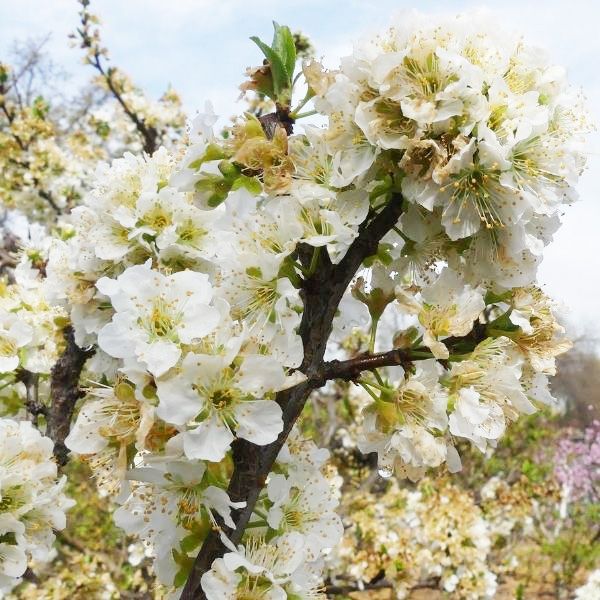
2. The Laroda Plum Tree
Nestled within the heart of the orchard, the Laroda Plum Tree stands as a beacon of fruitful promise. Originating from the warm climates of California, this mid-season variety bestows upon its caretakers not only a striking landscape feature but a bounty of deeply flavored, edible fruits.
Plantation & Growth
Thriving in USDA zones 5 through 9, Laroda plums demand a sunny spot with well-draining soil to unfold their full potential. Upon planting, spacing is crucial to accommodate their mature spread and height of approximately 18-20 feet. Early spring is the ideal season for planting, setting the stage for the growth of these luscious plums.
Plant Care
Regular watering, especially during dry spells, is critical in the first few years post-plantation. An annual application of a balanced, slow-release fertilizer in early spring encourages robust growth. Mulching around the base retains moisture and discourages weeds, creating a favorable growing environment.
Pruning & Propagation
Winter dormancy is the opportune time for pruning to shape the tree and remove any dead or diseased wood, ensuring a sturdy structure for fruit production. Propagation of the Laroda Plum Tree typically involves grafting, allowing gardeners to maintain the desirable traits of this unique variety to produce fruit.
Common Pests & Diseases
While the Laroda Plum Tree is relatively hardy, aphids and plum borers may pose threats. Preventative measures and attentive care can mitigate these issues, preserving the health of the tree.
Variety Advantages
The Laroda Plum stands out for its rich, wine-red flesh, enveloped by dark purple, smooth skin. The fruits are not only a treat for the taste buds—with their sweet, slightly tart flavor—but also versatile in culinary uses, from fresh eating to transforming into delectable jams and desserts. For gardeners seeking both beauty and taste, the Laroda Plum Tree is a splendid addition, offering a rewarding and picturesque garden experience.
Don't wait! Add this splendid Burbank Plum variety to your garden today and start reaping the rewards for years to come. Purchase your Burbank Plum tree now from ShrubHub's online store! Our extensive selection ensures you'll find the perfect fit for your yard.
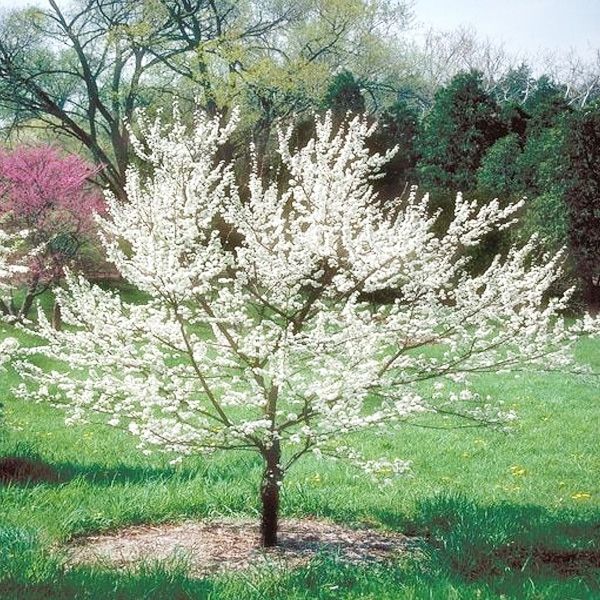
3. The Native American Plum Tree
The Native American Plum Tree, widely cultivated and known for its hardiness and versatility, carries a rich legacy. Celebrated for its delightful, edible plums, it provides more than just tasty produce—it contributes to biodiversity and acts as a historical symbol of Native American traditions.
Plantation & Growth
Thriving across an extensive range of USDA hardiness zones (3-8), the Native American Plum Tree craves ample sunlight and adapts to a variety of soil conditions, including sandy, loamy, or clay soils. Standing at 12-20 feet tall at maturity, this tree is an ideal fit for various garden spaces. With fragrant white blossoms in spring giving way to ripe, vibrant fruit, it offers year-round interest.
Plant Care
Although drought-resistant, regular watering improves fruit production. Mulch around the tree's base helps retain moisture and control weeds. Applying a balanced fertilizer annually will nurture the plant's overall health.
Pruning & Propagation
Winter is the best time for pruning to remove dead or disease-infected branches and promote a strong structure. Propagation is readily achieved through planting the plum's stone (seed), making it accessible for even novice gardeners.
Common Pests & Diseases
While resilient, this plum variety may face pests like aphids or plum borer, and diseases like black knot. Regular monitoring and prompt treatment are key to maintaining a healthy tree.
Variety Advantages
Possibly the most enticing feature of the Native American Plum Tree is its fruit. Yellow-red, tangy, yet sweet, the plums can be eaten fresh or used in preserves. Plus, the tree serves as an attractive habitat for wildlife and as a pollinator, adding ecological value to your landscape.
In essence, the Native American Plum Tree is more than a fruit bearer—it's a provider of history, beauty, and ecological balance, making it a truly worthwhile addition to any garden. Find your perfect Native American Plum Tree at shrubhub.com.
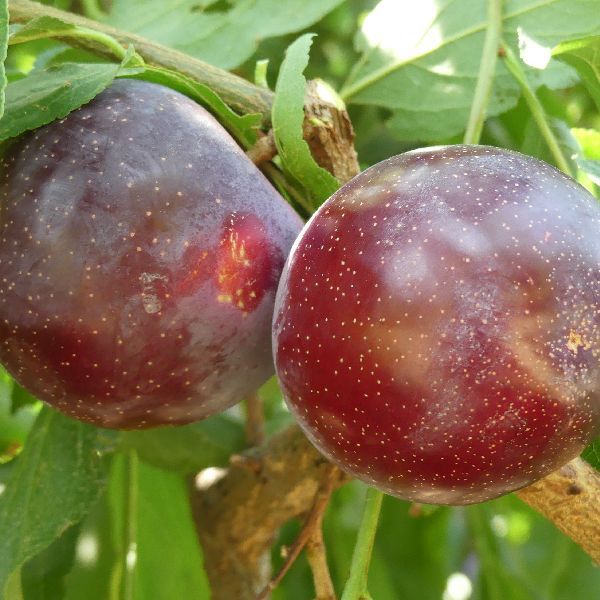
4. The Santa Rosa Plum Tree
The Santa Rosa Plum Trees grow as a crown jewel in the garden, praised for its profuse bloom and delectable fruits. Originating from the genius of Luther Burbank, this variety shines in USDA zones 5 through 9, offering both visual and gustatory pleasures.
Plantation & Growth
Select a sunny locale with well-draining soil to welcome a Santa Rosa Plum Tree into your garden. It flourishes to a height of about 15-25 feet, making a striking, yet manageable, presence. Spring's warm embrace is perfect for plantation, ensuring the tree settles in before the summer's heat.
Plant Care
Consistency in watering, particularly during dry spells, establishes a resilient root system. Supplementing with a balanced, slow-release fertilizer in early spring supports vigorous growth and fruiting. Mulching retains soil moisture, a boon for plants during hot months.
Pruning & Propagation
Late winter pruning, while the tree stands dormant, is crucial for shaping, removing diseased wood, and improving air circulation. Grafting is the popular method for Santa Rosa Plum propagation, allowing gardeners to replicate its desirable qualities effectively.
Common Pests & Diseases
Aphids, plum beetles, and diseases like plum pocket may pose threats, but these are manageable with attentive care and appropriate treatments. Early intervention is key to safeguarding your tree.
Variety Advantages
Santa Rosa Plums are celebrated for their vibrant, purple-red skin and sweet, tangy, juicy flesh, making them a standout for fresh eating, jams, and culinary creations. High in antioxidants and flavor, they embody a perfect blend of healthfulness and taste. Beyond their fruit, these trees offer a splendid floral display each spring, enhancing any garden with a splash of color and a fragrance that beckons pollinators.
Embrace the elegance and bounty of the Santa Rosa Plum Tree—an epitome of horticultural excellence and gustatory delight. Get your own Santa Rosa trees anywhere in the US through ShrubHub's online store.
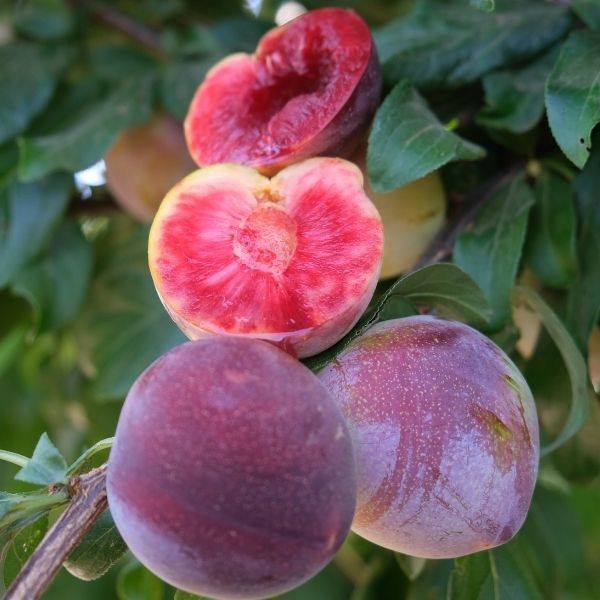
5. Satsuma Plum Tree
The Satsuma Plum Tree is a charming choice for gardens and orchards. This plant is not only fruitful with its juicy plums, but it also adds beauty to any garden with its attractive blooms and ability to withstand the cold. Whether eaten fresh or incorporated into delicious recipes, this plum tree is guaranteed to delight any fruit enthusiast. The Satsuma plum tree is known for its excellent cold hardiness, making it suitable for growing in various climates. It thrives in USDA hardiness zones 5-9, where the average extreme minimum temperatures can range from -20°F to 30°F (-29°C to -6°C).
Plantation & Growth
Choose a sunny spot with good drainage to introduce a Satsuma Plum Tree to your garden. Typically, this type of plum tree reaches a height of 10-15 feet and spreads approximately 10-12 feet wide. Gardens and orchards benefit from the visually appealing rounded canopy of this plant. Fragrant white flowers appear in clusters on the tree during early spring.
Plant Care
A resilient root system is built by watering consistently, especially in dry spells. Adding a slow-release fertilizer that is balanced in nutrients during early spring helps foster robust growth and fruit development. In hot months, mulching becomes advantageous as it helps plants retain moisture in the soil.
Pruning & Propagation
Pruning in late winter is essential for shaping, removing diseased wood, and enhancing air circulation while the tree is dormant. Gardeners commonly use grafting to effectively reproduce the desirable qualities of Satsuma Plum Trees.
Common Pests & Diseases
Plum curculio, aphids, and brown rot are no match for the strong resistance of Satsuma plum trees. Nevertheless, it is recommended to conduct regular monitoring and adhere to proper pest management practices.
Variety Advantages
Adding the Satsuma Plum Tree to your garden or orchard is a delightful decision. Not only does it provide a bountiful harvest, but it also adds ornamental value with its flavorful plums, attractive blooms, and ability to withstand cold temperatures. Whether savored as is or incorporated into delicious dishes, this plum tree is guaranteed to bring happiness and fulfillment to fruit lovers.
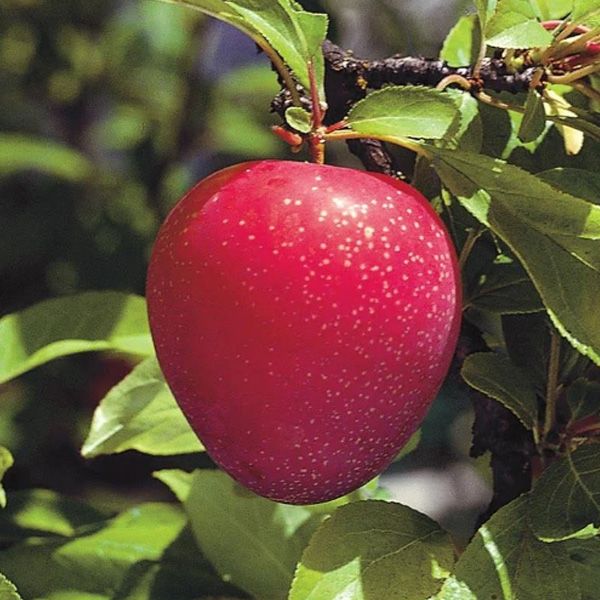
6. Superior Plum Trees
Gardeners should consider superior plum trees for their abundant harvest of large, tasty fruit. These plants are capable of self-fertilization and bear fruit on the previous year’s growth, ensuring consistent yields. The trees require minimal maintenance and can thrive in different soil types and growing conditions. Additionally, their spring exhibit features breathtaking pink and white blossoms with a delightful fragrance.
Plantation & Growth
Enhance your landscaping project with the ultimate addition, the Superior Plum Tree. With its height ranging from 4-5 feet, this stunning tree is suitable for any outdoor space. By being properly cared for, the Superior Plum Tree can reach heights of 20-25 feet and widths of 15-20 feet, offering ample shade and beauty for many years.
Plant Care
With the Superior Plum Tree, you can forget about planting multiple trees for a good harvest because it is self-pollinating. Moreover, it is a sturdy tree that can withstand diseases and adapt to various climates, making it an ideal option for gardeners in any location. Minimal effort is needed to maintain and care for this tree. Well-drained soil and full sun are its preferred conditions, but it can tolerate partial shade as well. Consistent watering and fertilization are key for a thriving, productive tree.
Common Pests & Diseases
Black knot, plum pox, canker, and leaf spot are among the most common diseases that affect this plant. The Superior plum tree can face significant issues like beetles, fruit drop, and fruit scarring.
Variety Advantages
The Superior Plum Tree is not only a source of delicious fruit, but also a stunning ornamental tree. In spring, it showcases vibrant pink and white blossoms, followed by lush green foliage in the summer. In the fall, the leaves transform into a beautiful red hue, enhancing your landscape with a burst of color.
Finding the Perfect Plum Tree Varieties for Your Garden
Growing plum trees in your garden provides many benefits beyond enjoying the delicious fruits. Plums come in a diverse range of colors, shapes, sizes, and flavors - from the sweet Italian prune plums to the extra juicy and tart Japanese varieties. With the array of options, you can find a type of plum perfectly well suited for your climate, space, and taste preferences.
Well-cared-for plum trees are relatively low maintenance once established, only needing occasional pruning, fertilizing, and pest management. Not only do they produce abundant fruit, but plum trees add beauty to landscapes with their blossoms in spring, white flowers, and attractive foliage. Their branches make great supports for climbing vines and roses.
Choosing the right plum variety, proper planting and attentive care will lead to many years of enjoyment from your homegrown plum harvests. The fruits can be eaten fresh, turned into jams and desserts, or even fermented into wine. Beyond providing delicious and nutritious fruits, plum trees are an investment that keeps on giving. With some consideration of your specific needs and conditions, you’ll find the perfect plum tree to plant in your garden.


